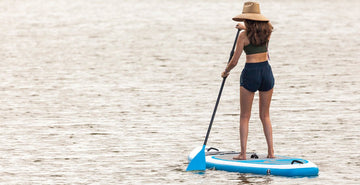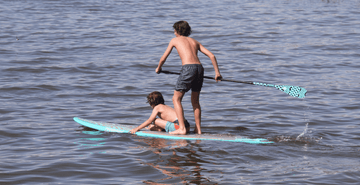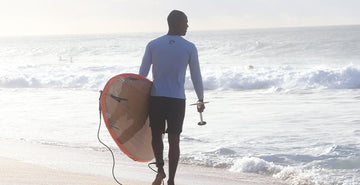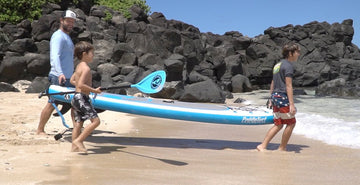
Paddleboarding, also known as stand-up paddleboarding (SUP), is a fun and relatively easy water activity that can be enjoyed in various environments, from calm lakes to ocean waves. Here are step-by-step instructions on how to paddle with a paddleboard:
1. Get the Right Equipment:
Paddleboard: Make sure you have a stable and appropriately sized board for your skill level and intended use (i.e., flatwater, surfing, touring).
Paddle: Choose a paddle that's the right length for your height and paddling style. A good rule of thumb is that the paddle should be around 6-10 inches taller than you.
Personal Flotation Device (PFD): Even if it's not always legally required, it's strongly recommended to wear a PFD for safety.
2. Choose the Right Location:
Start in calm, flat water if you're a beginner. As you gain confidence, you can progress to more challenging environments like rivers or oceans.
3. Set Up Your Board:
Place the board in the water, making sure it's floating in a stable position.
Stand next to the board in knee-deep water, with the fin facing down.
4. Getting on the Board:
Straddle the board, ensuring your weight is evenly distributed.
If it's your first time, you might want to start on your knees for stability.
5. Standing Up:
Position yourself in the center of the board. Start by placing your hands on the board, one at a time, and push yourself up into a kneeling position. Once you're on your knees, find your balance and slowly stand up, one foot at a time.
6. Stance:
Keep your feet parallel and about hip-width apart for stability.
Your toes should point forward, and your knees should be slightly bent.
7. Holding the Paddle:
Hold the paddle with a firm grip, one hand on top and the other about halfway down the shaft. The blade should be concave, with the angle facing forward.
8. Paddling Technique:
Engage your core and use your torso for power, not just your arms. Reach out with the paddle, plant it in the water, and pull it back towards your body.
Keep the paddle relatively vertical to maximize efficiency. Alternate sides with each stroke.
9. Maneuvering:
To go straight, take even strokes on both sides. To turn, paddle on one side more than the other. For example, to turn left, paddle more on the right side.
10. Balancing:
Keep your eyes focused on the horizon to help with balance.
If you start to wobble, bend your knees and lower your center of gravity.
11. Safety Precautions:
Always wear a PFD, especially in open water or if you're not a confident swimmer.
Be aware of your surroundings and other water users. Learn basic water safety and rescue techniques.
12. Practice and Have Fun:
Like any skill, paddleboarding improves with practice. Start in calm water and gradually build your skills.
Remember, practice makes perfect, so don't be discouraged if you find it a bit challenging at first. With time and patience, you'll become more comfortable on the paddleboard.
And if you're looking for the best paddleboard option to start your adventure, we have several options for all skill levels!
Discover our collections by clicking here.



